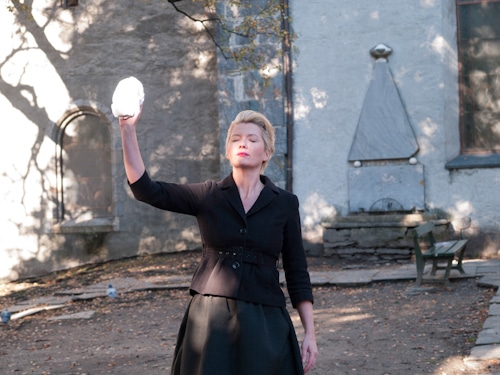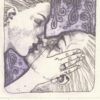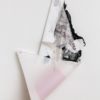On the international Women’s Day, it´s appropriate to forward one of our great female artists and social activists, Gitte Sætre.
The Norwegian artist works in multiple disciplines (dialog based art, photography, performance, video and sound sculptures). Her artistic actions often relate to social and political concerns. Her latest work Green Hijab Movement has emerged from an anxiousness of the ecological waste of our planet, while Soups & Stories is a social and dialogue based art and research project where the artist creates alternative forums for discussion about socio political topics.
In the process of thinking about art and society Sætre started working with a video-performance series called Woman Cleaning, followed by a description of what she cleans: Woman Cleaning Tanks, Woman Cleaning European History…
This is a series of work where she does performative penance; She cleans places and or objects. Sætre does this because waste derives from the very essence of one’s daily life and it symbolizes our existence of, as if it were, the intimate microcosm that exposes one’s activities. In order to visualize this she has constructed a figure that diligently washes and tries to create harmony. A person who tries to gain some sort of control or at least some understanding of the world around her.
The project is strongly linked to Sætre as a person, a Norwegian female born in 1975. The artist belongs to a generation that used to think everything was possible, but in many ways have lost that innocent position now. Thus, the Woman Cleaning project is within the sphere of national and international politics and touches upon rituals with religious connotations, feminism, humour, hopes and dreams.
Even before Sætre started on this extensive cleaning project, her work was very much related to women and the private sphere, through a project called Mothersdust.
In this series of works the artist collected dust from her house and used it as her artistic methodology. The piles of waste were photographed, and each small mass of dust became an artwork of great beauty.
Gitte Sætre’ s artistic methods derive from a desire to understand particular forms of knowledge production, which in her culture circle around certain representations.
Trough various ways of working, she investigates roles and positions. Sætre’ s temperament is well placed within her artistic praxis and working with art is her way of thinking and dealing with her embodied unrest.
She is never sentimental about the work as a cleaning lady and the way she presents a somewhat archaic female role. She performs with a poetic approach to what life has to offer, and asks how we may go about to do something about whatever we find wrong.




